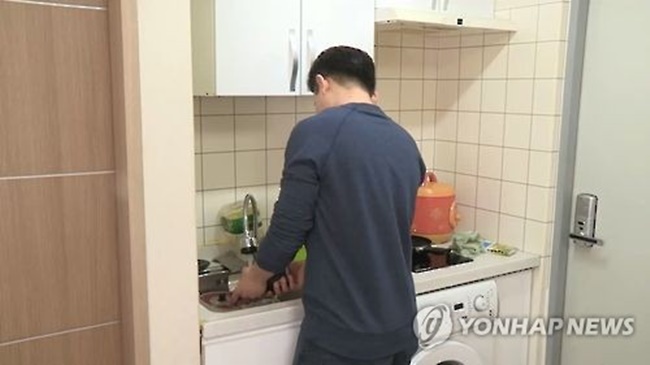
The number of economically inactive South Korean men involved in childcare and housework now stands at 170,000, the highest level since records began in 2003, according to data released by Statistics Korea on Wednesday. (Image: Yonhap)
SEOUL, Jan. 18 (Korea Bizwire) — Traditional gender roles in South Korean households are changing, as new data shows men are involved in childcare and housework now more than ever.
The number of economically inactive South Korean men involved in childcare and housework now stands at 170,000, the highest level since records began in 2003, according to data released by Statistics Korea on Wednesday.
The data shows an increasing number of men are playing an active role in parenting and household chores, while there are fewer full-time female homemakers in the country.
When broken down in detail, 166,000 men were dedicated to doing housework full-time, while 4,000 took responsibility for childcare.
Between 2003 and 2010, the number of full-time male homemakers grew from 106,000 to 161,000, before dropping in 2011.
The number of male homemakers, however, bounced back in 2015, reaching a record high of 170,000 in 2017, thanks in large part to a growing number of stay-at-home dads who do the housekeeping as a full-time responsibility.
In the meantime, the number of stay-at-home dads looking after children in the preschool years is on the decline, from 8,000 in 2015 to 4,000 last year.
In contrast, the number of full-time stay-at-home moms has dropped to 6.95 million, down for the fourth consecutive year since 2014.
It’s the first time in eight years that the number has fallen below 7 million.
The figures are in line with the country’s aging population, which means more men now take on traditionally female gender roles at home after retirement, Statistics Korea explained.
The growing number of working women in their 30s is also playing a role, contributing to breaking the stereotypes surrounding gender roles at home.
The employment rate among women in their 30s was 59.2 percent during the first half of last year, the highest level since 1999.

Traditional gender roles in South Korean households are changing, as new data shows men are involved in childcare and housework now more than ever. (Image: Yonhap)
“With the trend of late marriage or no marriage at all continuing, many women in their 30s are now working instead of staying at home, and older generations who retired are also coming back to the workplace,” said Jung Sung-mi, an official at the Korea Labor Institute.
“The changing social perception of gender roles is also a factor to be reckoned with,” Jung added.
Hyunsu Yim (hyunsu@koreabizwire.com)






